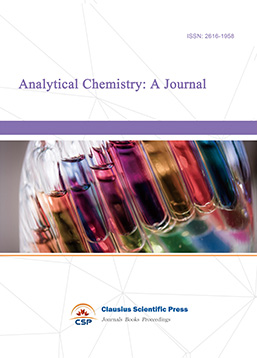Simulation Analysis of Out-of-control Reason of Vehicle Interior Air Quality
DOI: 10.23977/jmpd.2024.080104 | Downloads: 28 | Views: 1348
Author(s)
Weijian Chen 1
Affiliation(s)
1 China First Automobile Group Corporation, Changchun, China
Corresponding Author
Weijian ChenABSTRACT
To determine the main reasons of out-of-control of vehicle interior air quality (VIAQ) during mass production, we constructed a three physical field coupling simulation model, which included dilute matter transfer, volatile organic compounds (VOCs) distribution across temperature ranges, and VOCs convective flow. Effects of storage temperature, ventilation rate, ventilation pollution, storage time, and emission difficulty on the VOCs concentration of a sample of interior materials were quantitatively analyzed. Simulation results showed that storage temperature fluctuation could cause an emittable concentration increase of up to 71% at 25℃, which was the most likely out-of-control reason of VIAQ; ventilation pollution can significantly contribute to uncontrolled vehicle air quality with up to 82% concentration increase; fluctuations in ventilation rate and interior materials that are less likely to emit VOCs would not cause the VIAQ to be out of control; higher heating devolatilization temperatures can result in a faster reduction of emittable concentration in the interior materials at 25 ˚C.
KEYWORDS
Vehicle Interior Air Quality, Quality Control, Storage Condition, SimulationCITE THIS PAPER
Weijian Chen, Simulation Analysis of Out-of-control Reason of Vehicle Interior Air Quality. Journal of Materials, Processing and Design (2024) Vol. 8: 22-35. DOI: http://dx.doi.org/10.23977/jmpd.2024.080104.
REFERENCES
[1] Guanqiong W, Xudong Y. Effect of temperature on VOC emissions and odor from vehicle carpet[J]. Building and Environment, 2023, 246.
[2] Prado S K, Strangl M, Pereira R S, et al. Odor characterization of post-consumer and recycled automotive polypropylene by different sensory evaluation methods and instrumental analysis[J]. Waste Management, 2020, 115: 36-46.
[3] Florian B, M. H L, Andrea B. Investigations on the impact of hardening on the odour of an aqueous cavity preservation for automotive applications using sensory and instrumental analysis[J]. Talanta Open, 2022, (prepublish): 100095.
[4] Xiangdong Li. Research on the control system of in-vehicle air quality control (in Chinese) [D]. Beijing: Beijing University of Technology, 2018.
[5] Zhenrong Xue, Jingna Yang, Xiaohu Wang et al. Research on the development and control method of in-vehicle air quality (in Chinese) [J]. Automotive Science and Technology, 2017, (03): 56-59.
[6] HJ/T 400-2007, Methods for sampling and determination of volatile organic compounds and aldehydes and ketones in vehicles (in Chinese) [S]. Beijing: China Environmental Science Press, 2007.
[7] GB/T 27630-2011, Guidelines for the Evaluation of Air Quality in Passenger Vehicles (in Chinese) [S]. Beijing: China Environmental Science Press, 2011.
[8] Junxian Li, Jianming Zhou, Xiwei Man, et al. Influence of processing technology and storage conditions on VOC content of automotive interior parts (in Chinese) [J]. Automotive Process and Materials, 2015, (02): 50-52.
[9] Wei Liu, Zhenyu Zhu, Xuefeng Liu. Research on cost-effective simulation tool chain for in-vehicle VOC management (in Chinese) [G]. Proceedings of the Twenty-seventh Academic Exchange Activity of the Center for the Study of VOCs in Vehicles, Tianjin, 2020.
[10] Haimei W, Hao W, Jianyin X, et al. A rapid and robust method to determine the key parameters of formaldehyde emissions from building and vehicle cabin materials: Principle, multi-source application and exposure assessment[J]. Journal of Hazardous Materials, 2022, 430: 128422-128422.
[11] Haimei W, Jianyin X, Wenjuan W. Measurement methods and impact factors for the key parameters of VOC/SVOC emissions from materials in indoor and vehicular environments: A review [J]. Environment International, 2022, 168: 107451-107451.
[12] Wang H, Guo D, Zhang W, Zhang R, Gao Y, Zhang X, et al. Observation, prediction, and risk assessment of volatile organic compounds in a vehicle cabin environment. Cell Reports Physical Science. 2023; 4(4): 101375.
[13] Xuankai Z, Hao W, Baoping X, et al. Predicting the emissions of VOCs/SVOCs in source and sink materials: Development of analytical model and determination of the key parameters[J]. Environment International, 2022, 160: 107064-107064.
[14] Chen Y, Chu T, Chen X, et al. Comparative Analysis of Gas–Solid–Liquid Coupling Behavior in Front of the Working Face Before and After Water Injection During Coal Mining[J]. Natural Resources Research, 2021, 30(2): 1-15.
[15] Zhou S L, Bao C J, Wei J Y, et al. Solid-Gas Coupling Model and Numerical Simulation of Coal Containing Gas Based on Comsol Multiphysic[J]. Advanced Materials Research, 2012, 616-618: 515-520.
[16] Julia T, Nicklaus C, J. D N. COMSOL Multiphysics® modelling of oxygen diffusion through a cellulose nanofibril conduit employed for peripheral nerve repair [J]. BioMedical Engineering OnLine, 2021, 20(1): 60-60.
[17] Salvi D, Boldor D, Aita GM, et al. COMSOL Multiphysics model for continuous flow microwave heating of liquids [J]. Journal of Food Engineering, 2011, 104: 422-429.
[18] Wei Liu, Yuchen Guo, Zhenyu Zhu, et al. Simulation and calculation method for non-isothermal emission of volatile organic compounds from automobile interior materials: China (in Chinese), 202210622234.4 [P]. 2022-08-19.
| Downloads: | 4087 |
|---|---|
| Visits: | 253353 |
Sponsors, Associates, and Links
-
Forging and Forming

-
Composites and Nano Engineering

-
Metallic foams

-
Smart Structures, Materials and Systems

-
Chemistry and Physics of Polymers

-
Analytical Chemistry: A Journal

-
Modern Physical Chemistry Research

-
Inorganic Chemistry: A Journal

-
Organic Chemistry: A Journal

-
Progress in Materials Chemistry and Physics

-
Transactions on Industrial Catalysis

-
Fuels and Combustion

-
Casting, Welding and Solidification

-
Journal of Membrane Technology

-
Journal of Heat Treatment and Surface Engineering

-
Trends in Biochemical Engineering

-
Ceramic and Glass Technology

-
Transactions on Metals and Alloys

-
High Performance Structures and Materials

-
Rheology Letters

-
Plasticity Frontiers

-
Corrosion and Wear of Materials

-
Fluids, Heat and Mass Transfer

-
International Journal of Geochemistry

-
Diamond and Carbon Materials

-
Advances in Magnetism and Magnetic Materials

-
Advances in Fuel Cell

-
Journal of Biomaterials and Biomechanics


 Download as PDF
Download as PDF